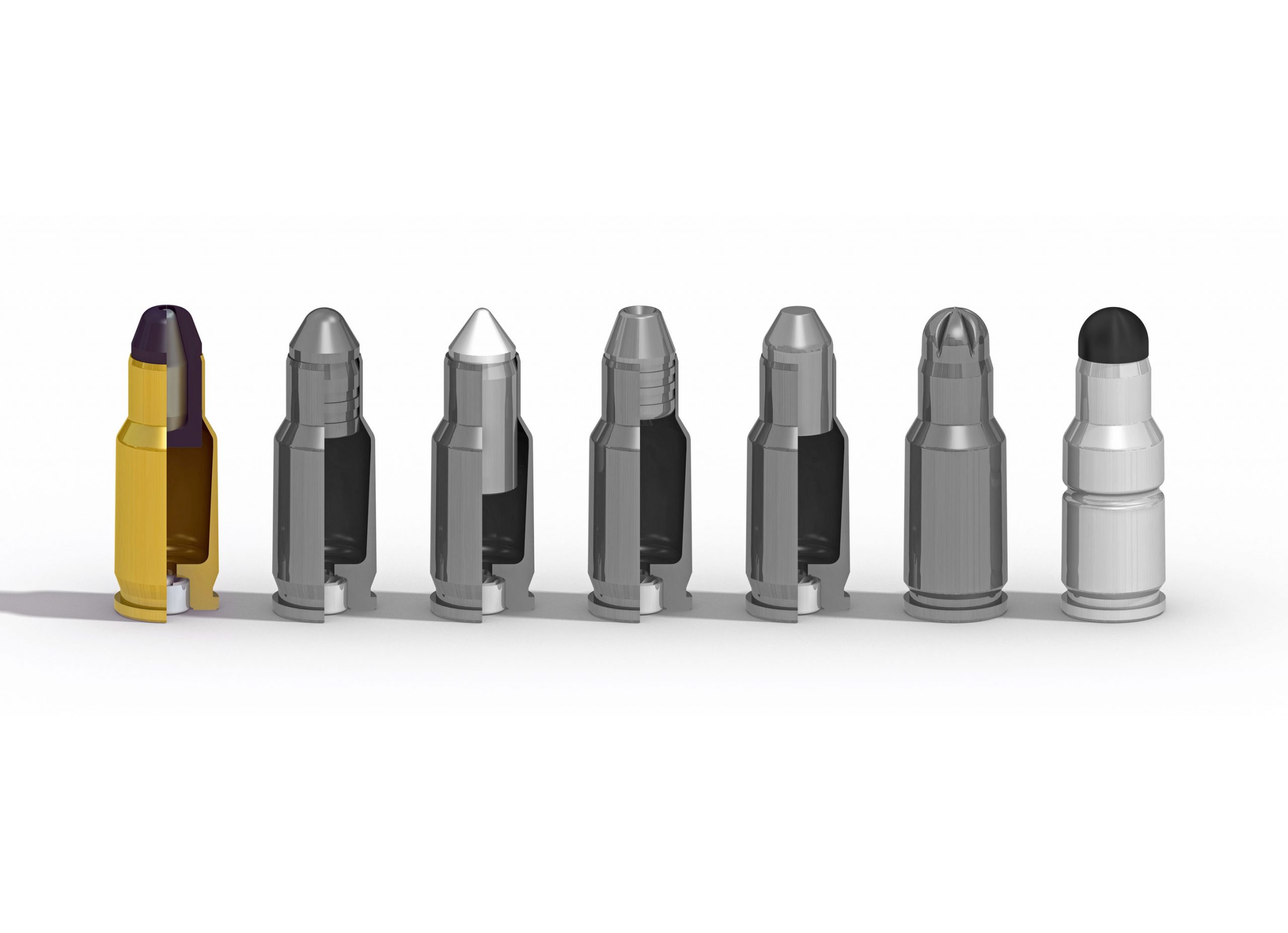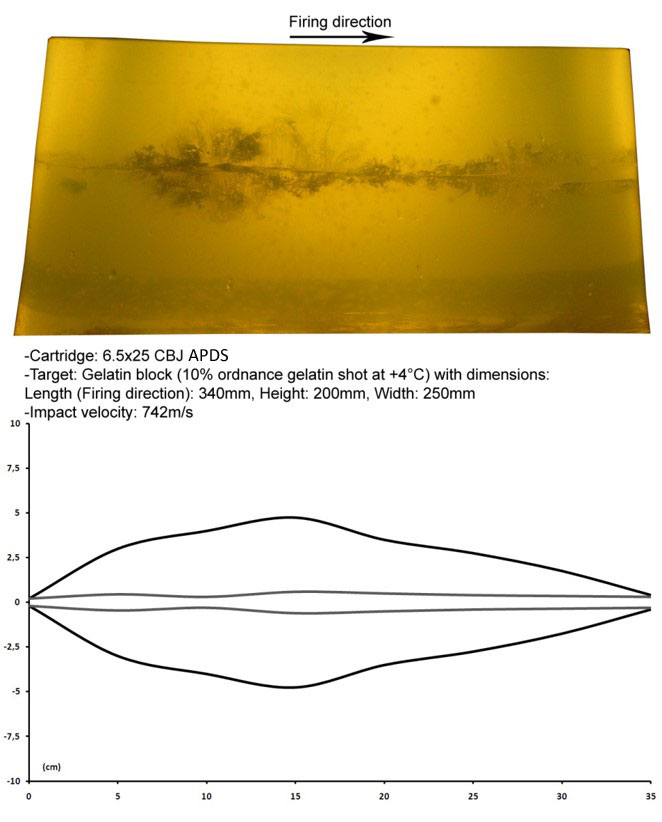6.5x25 CBJ APDS
Tungsten core inside a discarding sabot
6.5x25 CBJ APDS
Tungsten core inside a discarding sabotThe 6.5×25 CBJ APDS is the cartridge variant with the highest performance regarding armor piercing capability and long range ballistics. It has a tungsten core projectile enclosed in a discarding plastic sabot. The designation APDS stands for Armor Piercing Discarding Sabot. It is meant to be used like an all-round military ball cartridge with very good penetration capability. This variant was previously designated 6.5×25 CBJ Ball, to indicate the intended use for the cartridge, but APDS is a more correct designation in regard to the design and function of the projectile. Otherwise, the Ball and APDS variants are identical.
It offers a high penetration and wounding effect even at longer ranges of up to 300m+, and is effective against all targets normally engaged with small arms fire. This includes light skinned ground vehicles, helicopters etc. at closer range, as well as personnel with high levels of protection.
The low friction of the sabot against the bore among other factors gives high endurance for prolonged firing without overheating the weapon.
A very important feature of the discarding sabot, is that it does not disintegrate. It stays intact after leaving the core projectile and follows its path and drops to the ground at 20-25 meters from the muzzle. A typical spread pattern of the sabot at 10 meters range is within a 0,2m radius of the projectile’s trajectory.
Key benefits:
- High penetration performance
- High hit probability
- Long range
- High impact velocity at full ranges
- High wounding effect
- Low levels of barrel wear and corrosion
- Non-toxic

In a test of performance against hard targets, a hardened 8 mm thick armor plate taken from a rear door of a Russian MT-LB APC, and was fired at from a distance of 100 meters. The target was fully penetrated and the bullet retained considerable wounding potential, as was evident by a block of gelatin positioned behind the target. Standard military ball ammunition such as 5.56 NATO, 7.62 NATO and 9×19 Parabellum fails to penetrate this target at any distance.

Illustrated here is the effect in soft tissue simulant (ordnance gelatin) of the 6.5×25 CBJ APDS after penetration of the NATO CRISAT target, which is a simulated body armour consisting of a 1.6mm grade 5 titanium plate in front of 20 layers of Kevlar. Below is the Wound Profile of the test, which visualizes the permanent and temporary cavities.
.357 Magnum 158grain hollow point is an ammunition that is known for its good stopping power. It has been used by american police units and many others for a long time and there are plenty of data regarding the performance from real life situations. The drawbacks of using this cartridge is that you are mostly limited to 6 shot revolvers, and the recoil is hard to handle, even for experienced shooters.

When shooting in ballistic gelatin, it shows that the 6.5×25 CBJ APDS has a cavity that is similar in size and distribution to the .357 Magnum. The conclusion can be made the terminal performance is similar. The big difference is that the 6.5×25 CBJ can be shot from converted 9mm pistols with high capacity magazines and a soft recoil.

Precision
Several test have been made to measure the precision of the 6.5×25 CBJ APDS. These pictures show typical hit patterns fired under field conditions (outdoors shooting range) at different distances. The target used has a scoring area that is 500mm in diameter, and 25mm distance between the scoring lines.

6.5×25 CBJ APDS at 100m. A CBJ MS with 200mm barrel and bipod attached was used.

6.5×25 CBJ APDS at 200m. A CBJ MS with 200mm barrel and bipod attached was used.

6.5×25 CBJ APDS at 300m. A Steyr AUG with 325mm barrel was used.
Technical Data
Cartridge weight: 7,5g
Projectile length: 11,6mm
Projectile diameter: 4mm
Projectile weight: 2g
The graph to the right shows the trajectories from different barrel lengths. The X-axis is in m and the Y-axis is in mm.

The graph below shows the muzzle velocities from different barrel lengths at different ranges. The X-axis is in m and the Y-axis is in m/s.

The graph below shows the muzzle energies from different barrel lengths at different ranges. The X-axis is in m and the Y-axis is in Joules.

